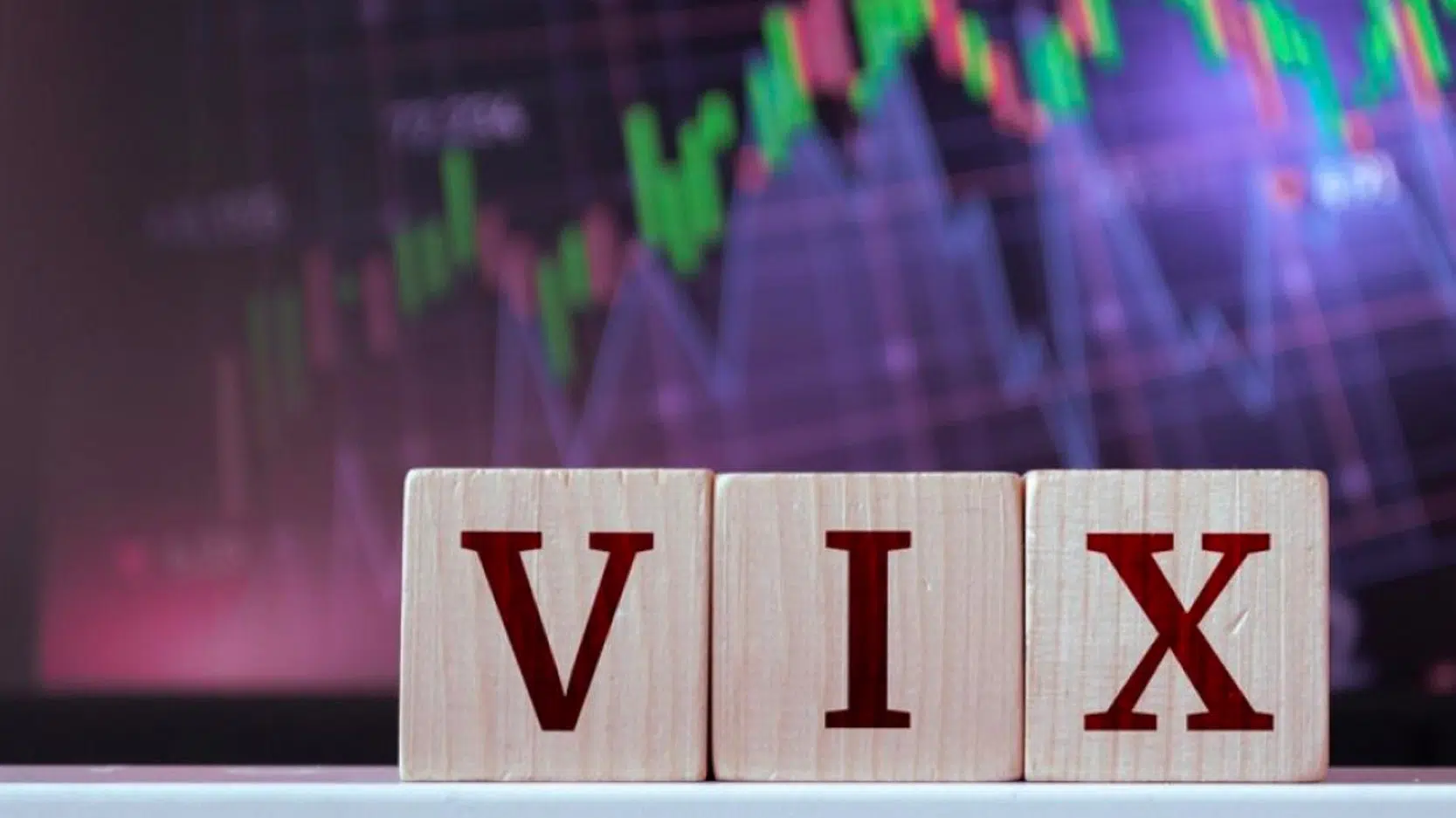What is a VIX ETF? Can You Profit from the Fear Index? A Comprehensive Guide to VIX ETF Investing and Risks
Market Storm Approaching: Fear or Greed? Understanding the VIX Fear Index
The stock market is a sea of red, headlines are sensational, and friends around you are sighing… In these moments of collective market panic, do you feel helpless? But have you ever considered that when “fear” itself becomes a tradable metric, it’s no longer just an emotion, but a potential opportunity? Today, let’s talk about the indicator that Wall Street both loves and hates—the VIX Index, and how you can turn market volatility into your investment strategy through a VIX ETF.
The VIX Index, short for the “CBOE Volatility Index“, is more commonly known as the “Fear Index.” Simply put, it reflects the market’s “expectation” of the volatility of the U.S. stock market (specifically, the S&P 500 Index) over the next 30 days.
Think of it as the stock market’s “weather forecast”:
- VIX Index soars: Indicates that the market expects sharp volatility (usually downward movement) in the near future. Market sentiment is tense, and demand for safe-haven assets increases.
- VIX Index is low: Indicates calm market conditions. Investors are generally optimistic, expecting stock prices to rise steadily or consolidate.
This index is calculated based on the prices of S&P 500 index options. When investors anticipate a major market decline, they rush to buy “Put Options” to hedge their positions. This demand drives up option prices, which in turn causes the VIX index to rise.
VIX Index vs. S&P 500: A Natural See-Saw Relationship
The most well-known characteristic of the VIX index is its fascinating “negative correlation” with the S&P 500 index. It’s like a see-saw—when one end goes down, the other is almost certain to go up.
When the S&P 500 rises: Market sentiment is optimistic and peaceful. No one is worried about a crash, and the VIX index usually languishes at a low level (e.g., below 20).
When the S&P 500 falls: Especially during a sharp decline caused by a black swan event, panic spreads, and the VIX index shoots up like a rocket.
Looking back at history, you’ll find this pattern holds true time and again:
- 2008 Financial Crisis: Lehman Brothers collapsed, the global economy was in peril, the S&P 500 crashed, and the VIX index surged to a historic high of over 80.
- 2020 COVID-19 Outbreak: Global lockdowns, economic shutdowns, and frequent circuit breakers in the stock market caused the VIX index to once again touch the 80 mark.
It is this clear negative correlation that makes the VIX an excellent “hedging” tool in a portfolio. When your stock assets are shrinking due to a market downturn, a well-placed VIX-related investment could be making you money, thus offsetting your risks. Want to see their relationship in real-time? You can compare the VIX and SPX (S&P 500 spot index) on the same chart on financial websites like TradingView to see it at a glance.
How to Invest in the VIX? You Can’t Buy It Directly, but You Can Buy VIX ETFs!
A crucial concept: The VIX is an index; you cannot buy it directly like a stock!
So, how can ordinary investors get in on the VIX action? The answer is through financial derivatives that track VIX futures. The most popular and accessible of these are VIX ETFs (Exchange-Traded Funds) or ETNs (Exchange-Traded Notes).
These ETFs/ETNs do not hold the VIX index directly but instead invest in short-term or mid-term VIX futures contracts in an attempt to replicate the index’s movements. Here are some of the well-known VIX-related products on the market:
| Ticker Symbol | Full Product Name | Underlying Asset | Suitable Strategy |
| VXX | iPath S&P 500 VIX Short-Term Futures ETN | VIX Short-Term Futures | Speculation or hedging against short-term sharp market volatility |
| VIXY | ProShares VIX Short-Term Futures ETF | VIX Short-Term Futures | Similar to VXX, but in an ETF structure |
| UVXY | ProShares Ultra VIX Short-Term Futures ETF | 1.5x Leveraged VIX Short-Term Futures | High-risk speculation, magnifies volatility, and amplifies gains and losses |
💡 Recommended Article
Want to learn more about the differences between ETFs and other investment tools? Click the link below to master more financial knowledge!
The “Hidden Killer” You Must Know Before Investing in VIX ETFs
At this point, you might be rubbing your hands together, ready to buy VIX ETFs during the next market crash. But wait! VIX ETFs are definitely not a “buy and forget” long-term investment. They have a fatal flaw that will slowly eat away at your principal if you don’t understand it.
This killer is called “Contango“.
In most calm market periods, the price of VIX futures for a later date is higher than the price for a nearer date. To maintain its tracking, a VIX ETF must constantly “sell the cheaper, expiring contract and buy the more expensive contract for the next month.” This constant price difference results in a continuous decay of the ETF’s net asset value. This is why if you look at the long-term historical chart of an ETF like VXX, you’ll see it trends almost consistently downward, even when the VIX index itself is fluctuating within a range.
Therefore, remember this: VIX ETFs are short-term trading instruments, not a part of a long-term asset allocation strategy! They are more like an expensive “fire insurance” policy that you only buy when you feel a fire is imminent, not something you hold for years.
How to Buy and Sell VIX ETFs or Related Products?
- Open a US stock brokerage account: This is the most direct way. You’ll need a brokerage account that allows you to trade U.S. stocks, and then you can trade tickers like VXX, VIXY, etc., just like any other stock.
- Through CFDs (Contracts for Difference): For more flexible and experienced traders, trading VIX-related products through a CFD platform is an option. CFDs allow you to use leverage, which can magnify profits (and, of course, losses), and you can trade in both directions (go long or short). However, please be aware that leverage is a double-edged sword with extremely high risk. Always trade with caution and set a stop-loss.
Conclusion: Is the VIX ETF an Angel or a Devil?
In summary, the VIX “Fear Index” is an excellent window into market sentiment, and VIX ETFs provide a channel to turn this sentiment into actual trades. It can be your “safe harbor” in stormy markets or a “speculative weapon” for pursuing high short-term returns.
However, it is a very sharp double-edged sword. Its high volatility and the value decay from contango mean it is only suitable as a short-term, tactical tool. Do not invest significant capital or hold it for the long term without fully understanding its mechanics and risks. For novice investors, it is advisable to start with paper trading to get a feel for its price volatility.
Remember, there is no holy grail in the world of investing. True wisdom lies in understanding the characteristics of each tool and using it the right way at the right time.
💡 Recommended Article
Want to learn more about ways to trade US stocks? Contracts for Difference (CFDs) are a flexible option. Read our complete guide now!
A Guide to Contracts for Difference (CFD): Understanding CFDs, Leverage, Risks, and Regulation
Frequently Asked Questions (FAQ) about VIX ETFs
❓Can VIX ETFs be held long-term?
Absolutely not recommended! Due to the common state of contango in VIX futures, the ETF experiences continuous value decay during the roll-over process. Holding it long-term is almost guaranteed to result in a loss. It is a tactical, short-term trading tool, not a strategic, long-term investment.
❓Is buying a VIX ETF the same as shorting the U.S. stock market?
Not exactly. Buying a VIX ETF is a bet that “market volatility will increase,” while shorting the U.S. stock market (like the S&P 500) is a bet that “the index itself will fall.” Although the two often happen at the same time, they are conceptually different. Sometimes the market might just move sideways with high volatility; the index might not drop much, but the VIX will still rise.
❓What is the lowest the VIX index can go? Can it go to zero?
The historical low for the VIX index is around 9. It is virtually impossible for it to go to zero, as a VIX of 0 would imply an expectation of zero volatility for the next 30 days—meaning stock prices would not move at all, which is impossible in the real world.
❓Besides VIX ETFs, are there other ways to invest in the VIX?
Yes, but they are generally more complex and suitable for professional investors. These methods include directly trading VIX futures contracts or buying and selling VIX options. These instruments have higher leverage and greater risk, requiring deeper professional knowledge and risk management skills.
Disclaimer: The content of this article is for educational and informational purposes only and does not constitute any investment advice. Financial markets involve risks. Before making any investment decisions, please conduct your own independent research and assess your own risk tolerance. Leveraged margin trading carries a high level of risk and may result in losses exceeding your initial deposit.
Related Articles
-
As the announcement of the 2025 Budget on February 26, 2025, approaches, Hong Kong society is closely watching how the government will balance the need for relief measures with structural reforms amidst the pressure of its HK$680 billion fiscal reserves. Financial Secretary Paul Chan Mo-po's recent emphasis on "precision in...2025 年 10 月 11 日
-
The Hong Kong Securities and Futures Commission (SFC) officially granted operating licenses to two cryptocurrency trading platforms—PantherTrade and YAX—on January 27, 2025, further promoting the compliant development of Hong Kong's crypto market. Since launching its licensing program in mid-2024, the SFC has issued licenses to seven Virtual Asset Trading Platforms...2025 年 10 月 11 日
-
As the U.S. Consumer Price Index (CPI) for January exceeded expectations, market forecasts for the Federal Reserve's future monetary policy shifted, causing the U.S. Dollar Index to rise rapidly and leading to a pullback in gold prices. However, despite this pressure, the gold market still shows potential for growth, primarily...2025 年 10 月 11 日












